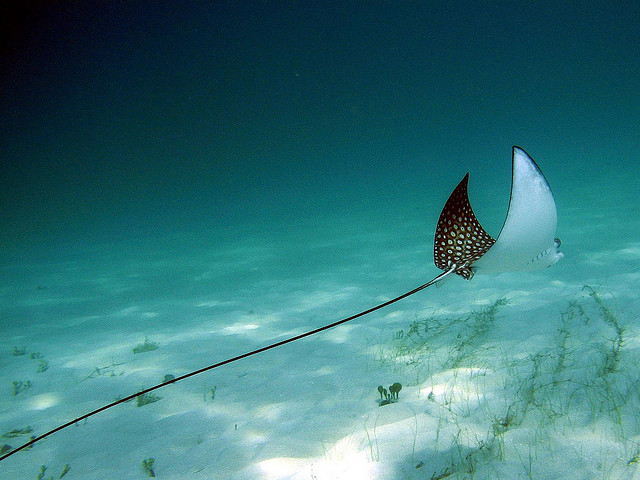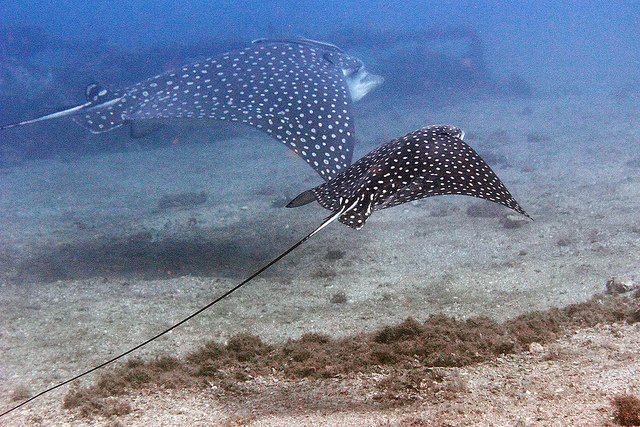Life History and Reproduction
Research has found that female and male spotted eagle rays are
fully mature through several characteristics. The female disk width
needs to be around 129.2 centimeters and have developed ova in their
ovaries. Males are sexually mature when they are about 134.9
centimeters. Their sexual organs, claspers, need to be calcified and
are able to rotate without difficulty around the base of the
structure (Tagliafico 2012).
Mating occurs belly to belly for the spotted eagle rays. It is incredibly common for one female to have had intercourse with several males within an hour. Paternity tests have even shown that a single brood of offspring possess DNA from several different fathers (Janse 2013). During the month of February through May, mating ensues more frequently. The inshore migratory movement increases the likelihood of reproducing between the male and female eagle rays (Tagliafico 2012). To learn more about where the spotted eagle rays live, visit the habitat page.
To observe the mating ritual of the spotted eagle ray is very rare. The creatures are shy in the wild and do not live long enough in captivity for researches to observe their reproductive behaviors. An observation made by Tricas, noticed in his travels a peculiar and possible mating behavior for the spotted eagle ray. He was on a pier looking down into the water when he saw them. He said there were three rays. One large female and two smaller males trailing behind her. Every so often, the two males would nip at her pectoral fin in which she would respond by swimming towards the surface of the water and slap her fins against it. The males would stop their onslaught but continue to follow her. She would then do as she was before when they were nipping at her but the males would circle around the female in a complete circle, then nip at her again. That was the last of what Triscas saw of them before they swam out of view (Tricas 1980).
 Baby spotted eagle rays develop and hatch inside the mother,
otherwise known as ovoviviparous reproduction. The
great white shark also
reproduces in this same manner. After the little ray
leaves the mother, she doesn’t give any further energy towards the
baby’s development (Pacific Shark Research Center 2014).
Baby spotted eagle rays develop and hatch inside the mother,
otherwise known as ovoviviparous reproduction. The
great white shark also
reproduces in this same manner. After the little ray
leaves the mother, she doesn’t give any further energy towards the
baby’s development (Pacific Shark Research Center 2014).
Continue on to learn about
Interactions, or return back to the
Home page.